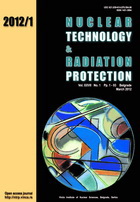
INTEGRATING FOUR-DIMENSIONAL GEOGRAPHICAL INFORMATION AND MOBILE TECHNIQUES INTO RADIOLOGICAL ACCIDENT EMERGENCY RESPONSE TRAINING
Pages: 84-92
Authors: Ming-Kuan Tsai, Yung-Ching Lee, Chung-Hsin Lu,
Mei-Hsin Chen, Tien-Yin Chou, Nie-Jia Yau
AbstractWhen radiological accidents occur, radioactive material may spread into the atmosphere, causing large-scale and long-term contamination. To diminish the effects of such accidents, researchers from many countries have investigated training programs in emergency response to radiological accidents, especially in the wake of several serious radiological accidents. Although many training programs have been proposed, this study identifies two problems: the lack of effective data representation and the lack of complete training records. Therefore, by considering various requirements for relief and evacuation work at radiological accident sites, it integrates four-dimensional geographical information and mobile techniques to construct a training platform for radiological accident emergency response. During training, groups of participants learn to respond to simulated radiological accident scenarios. Moreover, participants can use the training platform to review and discuss training details. Judging by the results, the training platform has not only increased the effectiveness of training programs, but also complied with standard operating procedures for radiological accident emergency response in Taiwan. In conclusion, this study could serve as a useful reference for similar studies and applications.
Key words: radiological accident, geographical information, emergency response, mobile, training
FULL PAPER IN PDF FORMAT (8,04 KB)
